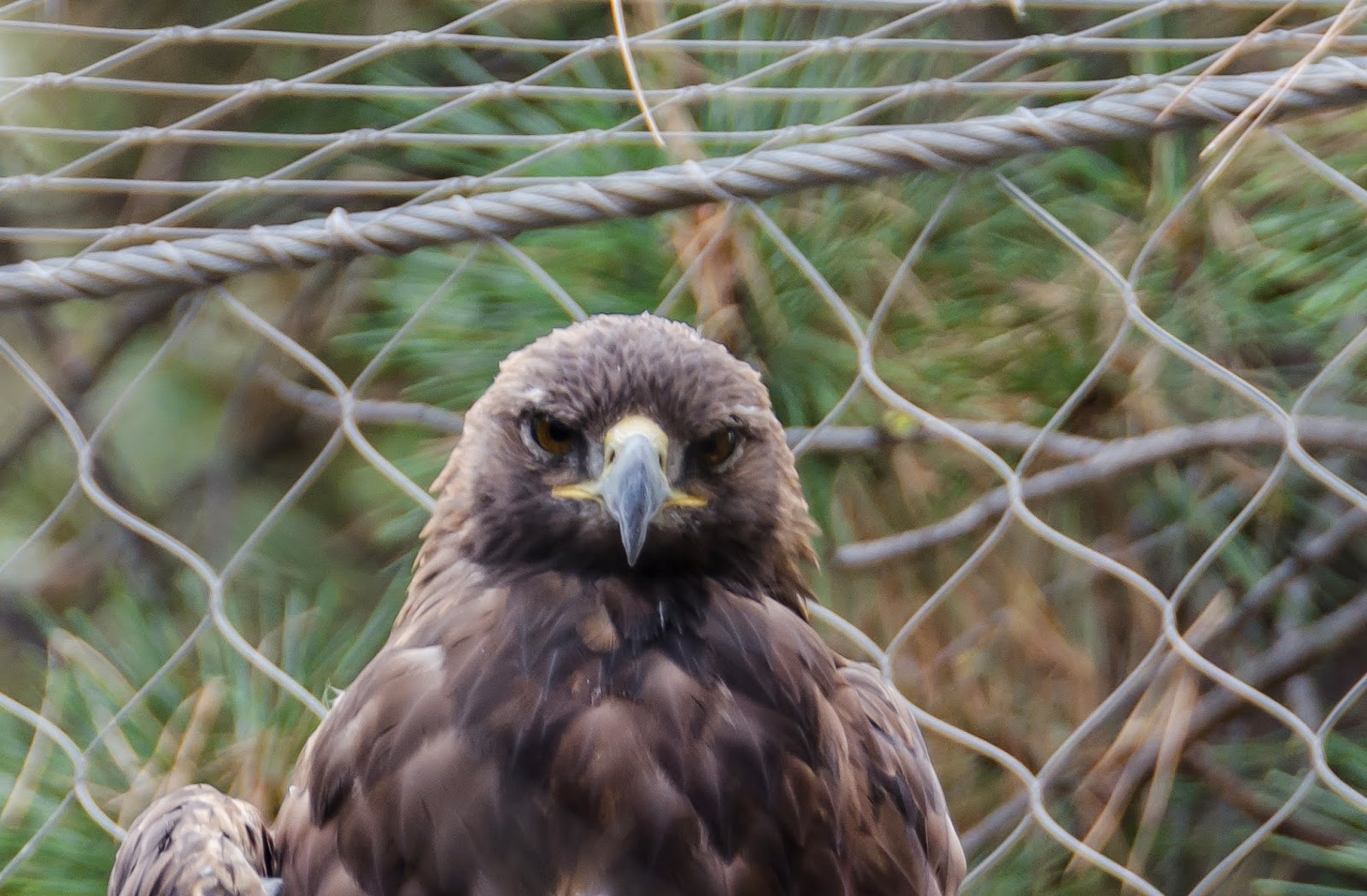DRECP Fact of the Day: Eagles
Golden eagles soar over the Mojave Desert. We know that wind turbines and golden eagles do not mix well. Solar power towers - like those that BrightSource and NRG built in the Ivanpah Valley - can burn eagles alive. And sprawling photovoltaic solar plants can destroy the wildlands where golden eagles like to forage for food. The U.S. Fish and Wildlife Service (FWS) is responsible for monitoring the status of the golden eagle, and determining whether or not any industry - including the renewable energy industry - is permitted to "take" (harass or kill) golden eagles. (Note: the golden eagle is not an endangered species, but it is protected under the Bald and Golden Eagle Protection Act)
Desert Renewable Energy Conservation Plan (DRECP), the FWS has determined that the total number of golden eagles that can be "taken" each year in the California desert is 15. (Appendix H, page H-28) According to the draft DRECP:
The FWS estimates that as many as 230 golden eagles call the California desert area home. The FWS believes that the population can remain stable - even with 15 eagles killed each year - because eagles from the California desert and surrounding territory will lay eggs and hatch baby eagles that can help replenish the population.
What is not clear is what will happen if the golden eagle population declines rapidly for other unexplained reasons, but FWS has already handed out so many permits to kill golden eagles that it has essentially given a green light to the local extinction of this majestic bird. FWS permits to kill golden eagles can be good for as long as 30 years, which makes it tougher to shut off the human causes of eagle deaths. Can FWS force energy projects to shut down to avoid the local extermination of golden eagles? FWS is handing out checks that are good for as many as 30 years, but the eagle population is dynamic - it can go up or down each year, and we do not always have control over what factors cause that fluctuation. What happens when FWS not only goes broke, but is in default - allowing companies to kill more golden eagles than can be replenished naturally?
The golden eagle is one of many amazing species that calls the desert home, and you can see that the DRECP lays out a policy framework that can substantially impact - for better or worse - the future of wildlife in the desert. Whenever I have time I will try to pull out these examples of impacts (on wildlife, lvisual resources, recreation, etc) and convey my concerns as accurately as possible. I do ask for your patience, though, because this is not my full time job and the DRECP is over 8,000 pages.
Desert Renewable Energy Conservation Plan (DRECP), the FWS has determined that the total number of golden eagles that can be "taken" each year in the California desert is 15. (Appendix H, page H-28) According to the draft DRECP:
"This number will go up or down depending on factors such as implementation of projects that take golden eagles inside or outside the DRECP area and the population status of golden eagles. The USFWS Migratory Bird program will send a letter annually in December to the DRECP executives to inform them of the amount of eagle take available for the following calendar year."This means that if FWS permits a wind project in the California desert to "take" up to 3 golden eagles a year for the next 20 years, there will be three fewer eagles available for other renewable energy projects to kill on an annual basis for the next 30 years. But FWS could revise the total cap of golden eagle "take" to be lower if studies determine that the golden eagle population is actually doing worse than expected, or revise the total "take" number to be higher if they find the golden eagle population to be doing well.
The FWS estimates that as many as 230 golden eagles call the California desert area home. The FWS believes that the population can remain stable - even with 15 eagles killed each year - because eagles from the California desert and surrounding territory will lay eggs and hatch baby eagles that can help replenish the population.
What is not clear is what will happen if the golden eagle population declines rapidly for other unexplained reasons, but FWS has already handed out so many permits to kill golden eagles that it has essentially given a green light to the local extinction of this majestic bird. FWS permits to kill golden eagles can be good for as long as 30 years, which makes it tougher to shut off the human causes of eagle deaths. Can FWS force energy projects to shut down to avoid the local extermination of golden eagles? FWS is handing out checks that are good for as many as 30 years, but the eagle population is dynamic - it can go up or down each year, and we do not always have control over what factors cause that fluctuation. What happens when FWS not only goes broke, but is in default - allowing companies to kill more golden eagles than can be replenished naturally?
The golden eagle is one of many amazing species that calls the desert home, and you can see that the DRECP lays out a policy framework that can substantially impact - for better or worse - the future of wildlife in the desert. Whenever I have time I will try to pull out these examples of impacts (on wildlife, lvisual resources, recreation, etc) and convey my concerns as accurately as possible. I do ask for your patience, though, because this is not my full time job and the DRECP is over 8,000 pages.




Comments
Post a Comment